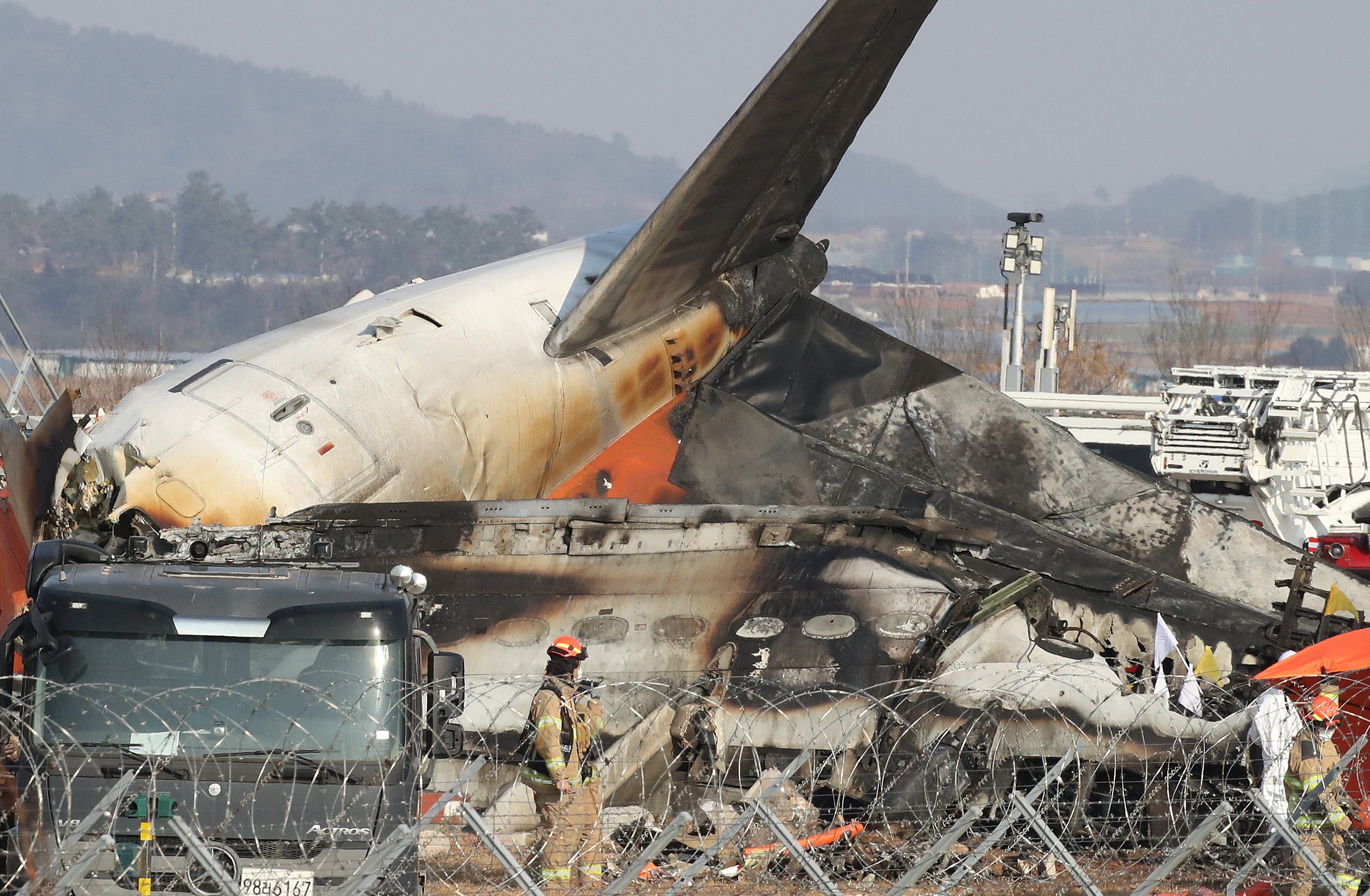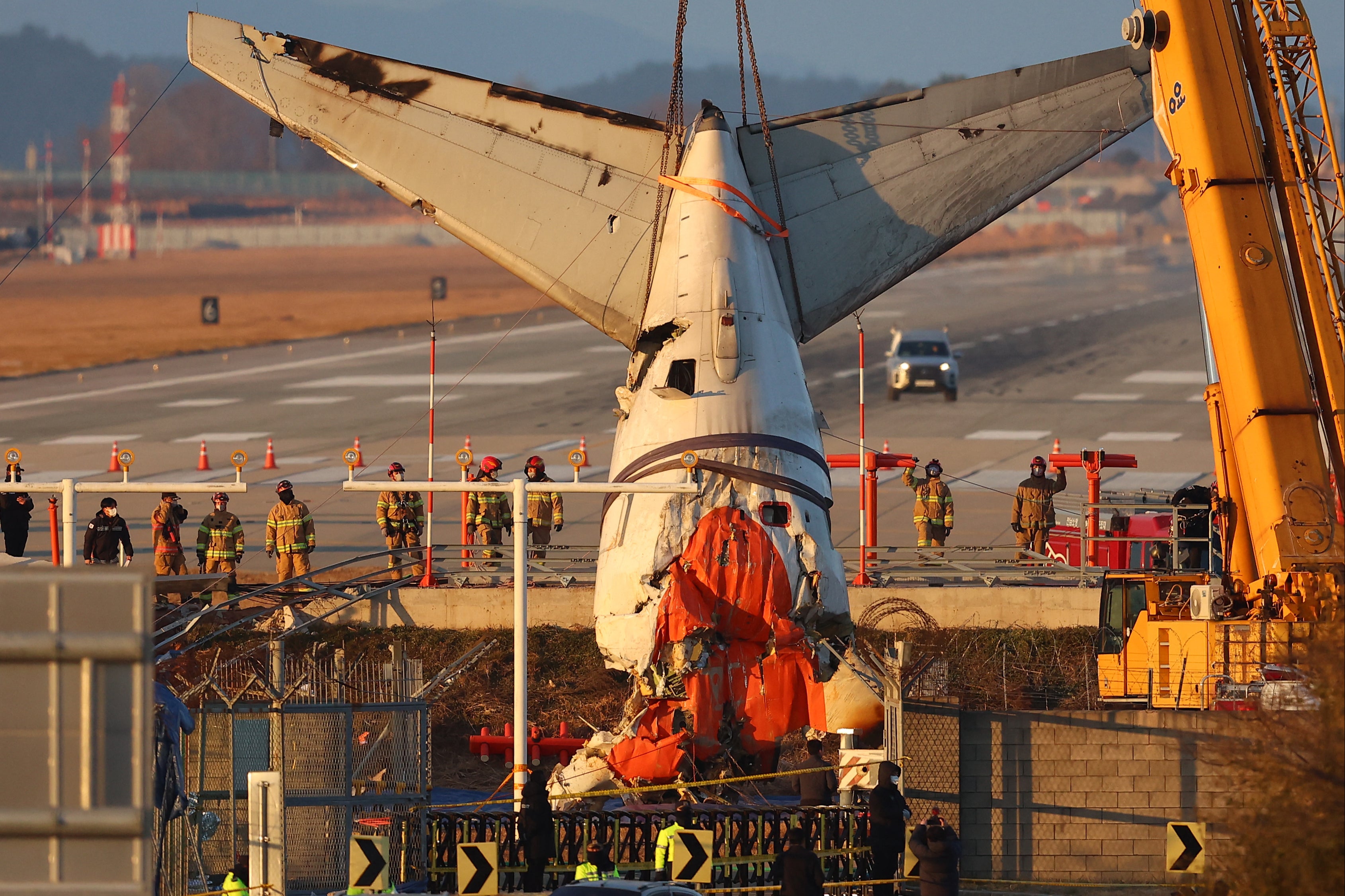South Korean minister to resign over Jeju Air crash that killed 179
Investigators say bird feathers found on one of aircraft’s engines
Your support helps us to tell the story
From reproductive rights to climate change to Big Tech, The Independent is on the ground when the story is developing. Whether it's investigating the financials of Elon Musk's pro-Trump PAC or producing our latest documentary, 'The A Word', which shines a light on the American women fighting for reproductive rights, we know how important it is to parse out the facts from the messaging.
At such a critical moment in US history, we need reporters on the ground. Your donation allows us to keep sending journalists to speak to both sides of the story.
The Independent is trusted by Americans across the entire political spectrum. And unlike many other quality news outlets, we choose not to lock Americans out of our reporting and analysis with paywalls. We believe quality journalism should be available to everyone, paid for by those who can afford it.
Your support makes all the difference.South Korea’s transport minister is resigning because he feels “heavy responsibility” for the Jeju Air crash that killed 179 people last month.
A Jeju Air aircraft carrying 181 passengers and crew crashed at the Muan international airport on 29 December in what was the country’s worst air disaster.
The plane failed to deploy its landing gear, landed on its belly, overshot the runway, rammed into a concrete wall, and burst into flames, killing everyone onboard except two crew members seated at the back.
“I feel heavy responsibility for this disaster,” Park Sang Woo said at a press conference on Tuesday, adding that he would find the right time to resign.
A week after the tragedy, South Korean authorities were still investigating the cause of the crash, with fire officials suggesting a bird strike or bad weather led to the accident.

Aviation experts have said the concrete embankment that the aircraft rammed into was too rigid and too close to the runway. It was after crashing headlong into that wall, designed to prop up a localiser antenna for guiding landings in poor visibility, that the plane disintegrated and caught fire.
Joo Jong Wan, the deputy transport minister for civil aviation, has acknowledged that the safety measures observed during the building of the wall were not sufficient, but maintained that they were in line with regulations in Korea and overseas.

South Korean police investigating the incident raided the offices of Jeju Air and the Muan airport operator last week, securing evidence like the localiser and the communication records between the control tower and the pilot before the crash.
Lee Seung Yeol, head of the investigation team, said at the press briefing on Tuesday that they had found feathers on one of the engines recovered from the crash site and that there was video footage showing a bird strike.
The government, meanwhile, extended the shutdown of the Muan airport until 14 January.
Two Korean investigators departed for the US on Monday to work with the National Transportation Safety Board in recovering and analysing a flight data recorder that was damaged in the crash.
The flight data recorder, together with the cockpit voice recorder, forms the black box that holds critical information about the incident.
Mr Lee said it would take three days to extract the files from the data recorder and two more to do a preliminary analysis of the data.

Join our commenting forum
Join thought-provoking conversations, follow other Independent readers and see their replies
Comments